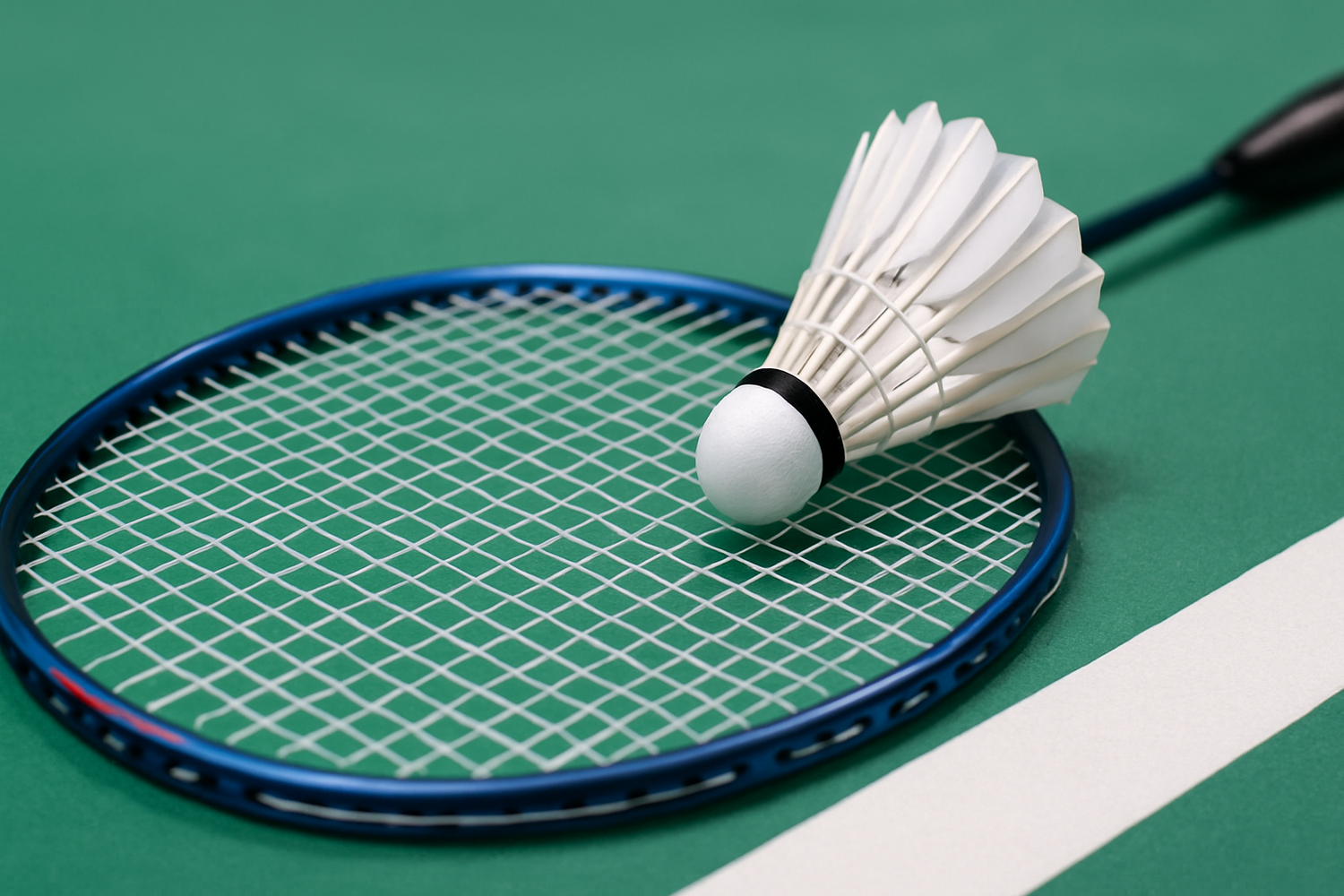
Stringing Tension Badminton: Which String to String for Badminton & Badminton Racket
Key Takeaways
- Correct string tension = crucial for control and power
- Lower tension: more forgiveness, less speed
- Higher tension: more control, smaller sweet spot
- Recommendation: 8–10 kg (beginner), 10–11.5 kg (advanced), 12–14 kg (professional)
- Thinner strings → choose lower tension
- Plastic shuttles: approx. 1 kg less tension
The correct string tension is one of the most underestimated aspects of badminton. It determines control, power, durability, and feel. In this article, you'll learn what string tension means, how to find the right tension, and which strings suit your playing style. You'll also find a video explanation at the end.
Note: You can of course also find suitable strings and rackets in the Bash Badminton Shop – but the focus here is on understanding how the stringing affects your game.
What does “string tension” mean in badminton?
"String tension" refers to the tension (pulling force) with which the string is clamped into the racket frame. The higher the tension, the harder the stringing. This setting influences how strongly the badminton shuttle rebounds, the size of the sweet spot (ideal impact point), and how much control or power you have when hitting.
Factors influencing string tension
- Playing level: beginners, advanced, professionals
- Playing style: Attack, defense, all-round
- String type & gauge (thickness) of the string
- Material of the racket and recommended tension by the manufacturer
Why is the correct string tension important?
The tension of the string directly influences your performance:
- Power & Rebound: Lower tension results in a slower rebound speed because the string flexes more and absorbs some of the energy. Higher tension transfers the impact energy more directly to the ball, but requires more precise timing.
- Control: Higher tension provides more precise feedback and better placement, but reduces the sweet spot and is less forgiving.
- Durability & stress on the racket frame: Very high tensions put more pressure on the frame and strings – and also shorten the lifespan of the strings , as the strings wear out faster and break more easily.
Which tension suits which type of player?
The following overview will help you find your way:
| Level | Recommended voltage* |
|---|---|
| beginner | 8–10 kg (≈ 18–22 lbs) |
| Advanced | 10-11.5 kg (≈ 22-25 lbs) |
| Experienced/Professional | 12–14 kg (≈ 26–31 lbs) |
*Depending on the manufacturer and racket model. These values are based on experience and will help you find your optimal setting.
Practical examples
• If you are still developing your technique, a slightly lower tension is recommended - it is more forgiving of mishits and at the same time protects your frame and arm.
• If you already have a clean hitting technique and want to play precise net or smash shots, you can increase the tension - but this requires good timing and technique.
• For plastic shuttles, many expert sources recommend reducing the tension by about 1–1.5 kg (≈ 2–3 lbs) because the ball is less elastic.
• Also, the optimal hardness also depends on the gauge of the string – thinner strings should be strung with slightly less tension to prevent breakage and loss of tension.
Which string for which purpose?
The choice of string depends directly on the string tension and your playing style:
Gauge (thickness) of the string
Thinner strings provide more feedback and bite, but wear out faster. Thicker strings last longer but feel a bit "sluggish."
Game objective: Power vs. control vs. durability
- Power strings: Softer feel, good rebound – ideal for medium to low tension.
- Control strings: Offer precision, suitable for higher tensions and experienced players.
- Durability: If you play a lot, choose a more durable string and avoid extreme tension.
Further tips on covering & care
• Check the maximum tension recommended by the racket manufacturer – do not exceed it.
• Have your covering checked or replaced regularly, as the tension decreases over time.
• Plastic shuttles: choose a slightly lower tension (see above).
• Never store rackets in hot or frosty conditions – the material and strings are sensitive.
• If your string sounds duller or the feedback decreases, this indicates a loss of tension.
Video: Badminton strings & tension explained
Conclusion
The tension of your badminton racket significantly influences your feel, control, and string durability. There's no "perfect" tension—it depends on your playing style, material, and skill level. Regularly adjusting your tension will help you play more consistently over the long term while also protecting the material.
If you want to learn more about it or are looking for the right string, you will find expert advice and a large selection of strings at Bash Badminton .
